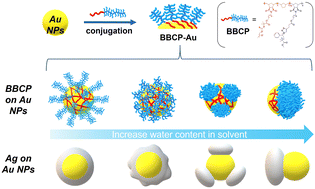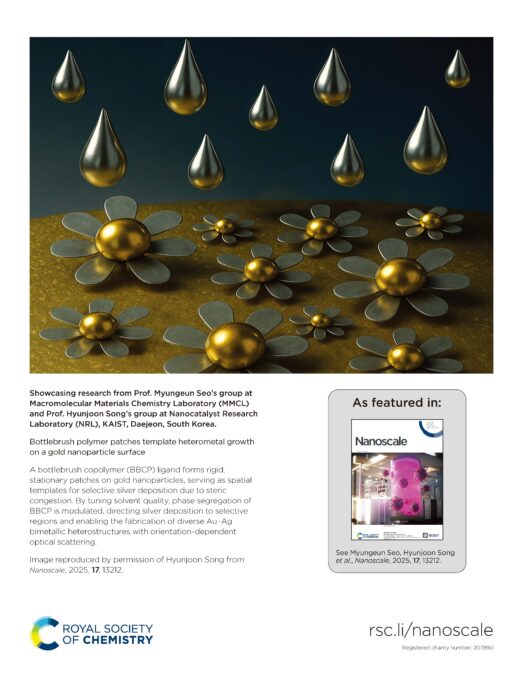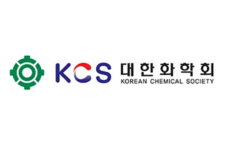Bottlebrush copolymer patches for Au Nanoparticle
We teamed up with Hyunjoon Song group in the department of chemistry, KAIST, to utilize bottlebrush copolymer as a ligand for metal nanoparticles. Bottlebrush polymer is renowned for its extended conformation due to steric congestion between densely grafted side chains. Compared to a linear polymer at the same molecular weight, bottlebrush polymers are much harder to entangle, leading to fast chain dynamics. We exploited this characteristic feature to rapidly segregate and collapse bottlebrush segments on the surface of Au nanoparticles by changing the solvent quality. We further utilized the resulting patch morphlogy to selectively deposit the second metal (Ag in particular) in the exposed surface to creat unique bimetallic nanostructures that exhibit distinct optical properties not achievable through conventional thermodynamic methods. Our results were recently published in Nanoscale including Jiyun in our group as the co-first author.
Minjun Kim, Jiyun Nam, Jiseok Kim, Hyunsik Hwang, Myungeun Seo and Hyunjoon Song. Bottlebrush polymer patches template heterometal growth on a gold nanoparticle surface. Nanoscale 2025, 17, 13212-13218

Jiyun showed that a trithiocarbonate moiety typically used as a chain transfer agent in the RAFT polymerization can be anchored on the Au surface. She prepared a trithiocarbonate-containing norbornene monomer (which we used for the grafting-from polymerization in bottlebrush PIMS) and grew a linear polymer segment from the end of polystyrene (PS) bottlebrush block using ring openinng metathesis polymerization. The bottlebrush-linear copolymer nicely stabilized Au nanoparticles in DMF by wrapping them up with the linear segment and providing steric repulsion between particles in the presence of the bottlebrush corona.
Adding water, which is a non-solvent to PS, rapidly collapsed the bottlebrush segment and resulted in a patchy morphology consisting of PS patches and exposed surface. We could control the number of patches by adjusting the DMF/water ratio to produce a range of configurations from uniform isotropic shells to more complex patchy and crescent-like domains. Selective Ag deposition on exposed areas of the Au surface resulted in a variety of Au-Ag heterostructures, such as multi-domain core-shells, multiple silver islands, and even Janus heterodimers. The resulting structures’ orientation-dependent localized surface plasmon resonance (LSPR) scattering, monitored by single-particle plasmon imaging properties, was well consistent with the patchy morphology and supported by finite-difference time-domain (FDTD) simulations. We believe that our findings offer a significant advance in the synthesis of complex anisotropic heterostructures.
The work was also selected as the outside backcover of the issue.


